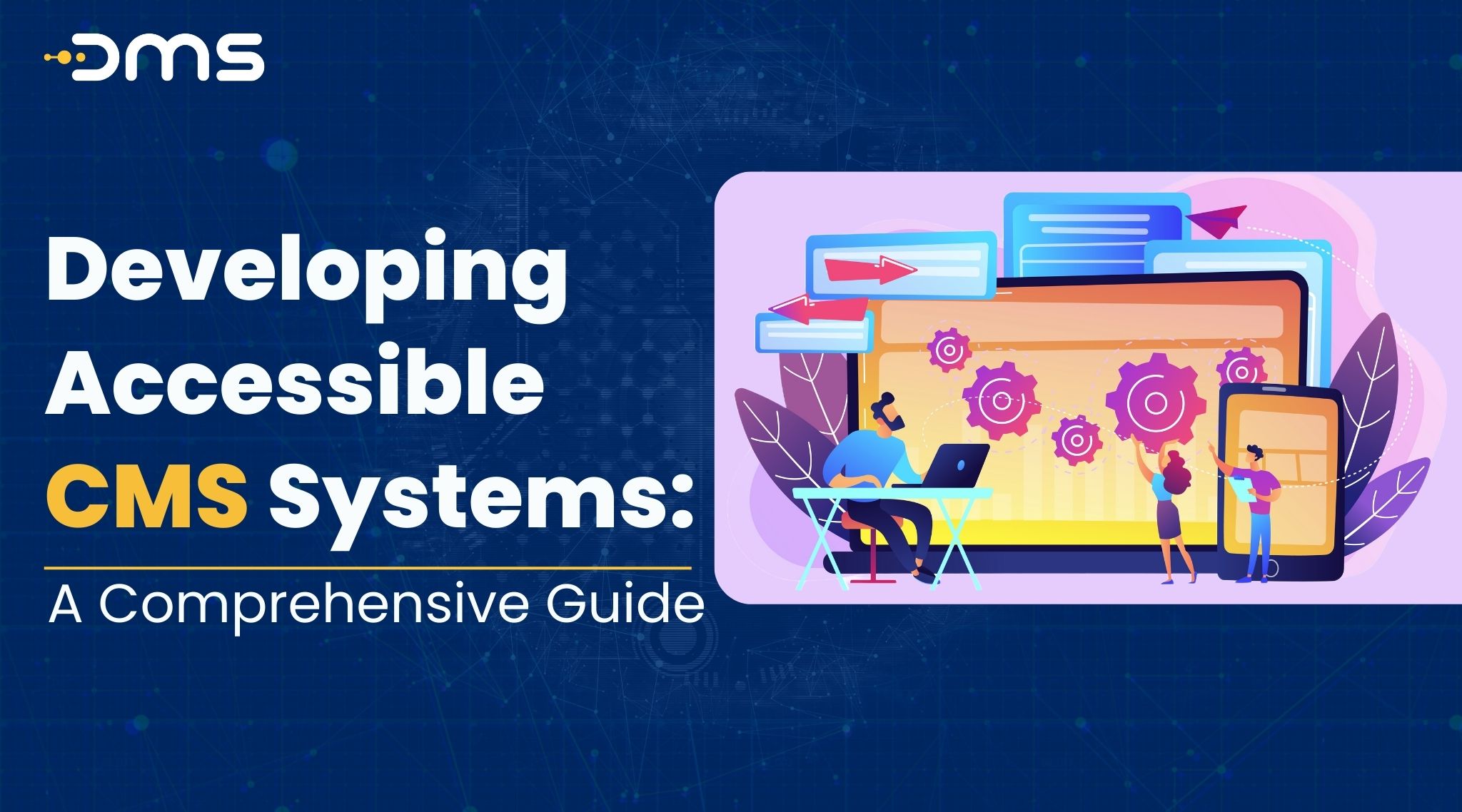The importance of developing accessible content management systems (CMS) cannot be stressed enough as more and more organizations and businesses turn to online platforms. All users, even those with disabilities, may simply look around and utilize the website thanks to an accessible CMS. In this article, we’ll discuss what an accessible content management system is, how it’s helpful, and how to make one.
Introduction
An accessible CMS is designed to cater to all users, regardless of their physical abilities. It guarantees that people with impairments may access and utilize the website with ease. In addition to helping people with disabilities, creating an accessible CMS also helps businesses and organizations because it allows them to connect with a wider audience.
What is an Accessible CMS?
An accessible CMS is a content management system that adheres to web accessibility guidelines. All users, including those without impairments, should have no trouble accessing or navigating the website thanks to its user-friendly design. A CMS that is accessible must not only comply with legal requirements but also create an environment where everybody may engage freely.
Benefits of an Accessible CMS
An accessible CMS has several benefits for both businesses and users. First of all, it allows them to connect with a wider demographic, which includes those with impairments. Secondly, it ensures that the website is compliant with web accessibility guidelines, reducing the risk of lawsuits and penalties. Last but not least, a CMS that is accessible enhances the user experience for all users by making the website simpler to use and browse.
Understanding Web Accessibility Guidelines
The objective of online accessibility rules is to guarantee that all consumers, including those with disabilities, can access websites. The Web Content Accessibility Guidelines (WCAG) are a set of rules that are most frequently used. WCAG provides a comprehensive set of guidelines for creating accessible websites, including guidelines for text alternatives, keyboard accessibility, and multimedia content.
Designing an Accessible CMS
Designing an accessible CMS requires careful planning and consideration. The layout should be straightforward, simple to use, and have a distinct hierarchy. Additionally, it must be created with the user’s wants and abilities in mind. Users with disabilities should test the design to ensure that it is user-friendly and easily accessible.
Implementing Accessibility Features in the CMS
Implementing accessibility features in the CMS involves incorporating features that make the website more accessible to users with disabilities. This includes providing alternative text for images, using appropriate heading tags, providing keyboard accessibility, and providing captions and transcripts for multimedia content.
Providing Alternative Text for Images
Alongside users with visual impairments, providing alternative text for images is crucial. Alternative text is a short description of the image that is read aloud by screen readers. It should be concise and descriptive, providing the user with a clear understanding of the image.
Using Appropriate Heading Tags
Using appropriate heading tags is essential for creating a clear structure and hierarchy on the website. Headings should be used to break up content and make it easier to navigate. Heading tags should be used in the correct order, with H1 for the main heading and H2, H3, and H4 for subheadings.
Providing Keyboard Accessibility
Providing keyboard accessibility is essential for users with mobility impairments. The website should be designed to allow users to navigate and interact with the website using only the keyboard. This includes providing keyboard shortcuts, ensuring that focus is visible, and ensuring that users can navigate the website in a logical order.
Providing Captions and Transcripts for Multimedia Content
Providing captions and transcripts for multimedia content is essential for users with hearing impairments. Captions and transcripts provide a text alternative for audio content, allowing users to understand the content without relying on sound. Captions should be synchronized with the audio content, and transcripts should be provided in a format that is accessible to all users.
Making Forms Accessible
Making forms accessible is essential for users with disabilities, particularly those with visual impairments. Forms should be designed to be easy to navigate and complete using a keyboard. Labels should be provided for form fields, and error messages should be clearly displayed. Forms should also be designed to be compatible with screen readers.
Testing for Accessibility
For sure the website is usable by everyone, including individuals with disabilities, and accessibility testing is crucial. Testing should be conducted using a variety of assistive technologies, including screen readers, magnifiers, and alternative input devices. Testing should also be conducted with users with disabilities to ensure that the website is easy to use and accessible.
Training Content Creators
In order to guarantee that the content they develop is accessible, content providers must be trained. Content creators should be trained on how to create accessible content, including providing alternative text for images, using appropriate heading tags, and creating captions and transcripts for multimedia content. To make certain that the content they produce is accessible, content creators ought to get training on how to utilize the CMS.
Tips for Developing Accessible CMS Systems
Developing accessible CMS systems requires careful planning and consideration. Here are some tips to help you create an accessible CMS:
- Use clear and concise language
- Provide alternative text for images
- Use appropriate heading tags
- Provide keyboard accessibility
- Provide captions and transcripts for multimedia content
- Make forms accessible
- Test for accessibility
- Train content creators
Conclusion
Developing an accessible CMS is essential for reaching a wider audience and creating an inclusive environment. Businesses and organizations can make sure that their website is accessible to all visitors, including those with impairments, by following web accessibility principles and implementing accessibility elements in the CMS.


